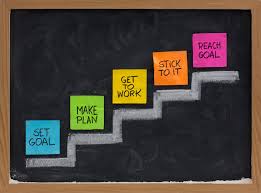7 Reasons Why Your App Failed
It’s no secret that 90% of new apps fail to take off.
But what IS more of a secret is exactly what happened to cause these epic app flops.
To tell the truth, the reasons are varied.
But I’ve realised that they all come down to a failure in one massively broad arena…
MARKETING
Okay, but what is marketing?
I can also break this down simply for you.
Marketing consists of these 7 key principles:
- Product
- Price
- Place
- Promotion
- People
- Process
- Physical Evidence
AKA: Create a great product, offer it at the right price, make sure the product is designed for the most appropriate geographic location, promote it, remember that ‘real people’ use it, create a customer-centric ‘process’ (user experience) and have physical touch points.
Simple yeah?
If you’re app needs a re-launch, didn’t do as well as you hoped or you’re unsure what to do, please keep reading.
These are the 7 reasons why you’re app will fail, or why it probably failed:
-
You didn’t do ‘Marketing’
Source: Gravity4
Here are the biggest mistakes most new businesses make and reasons why app fails:
a) Staying in ‘Startup Stealth Mode’ for too long.
Your idea is most likely genius, but it’s not a deadly pathological disease that needs to be kept under secret government protection with an auto-destruct button.
If you do this, you’ll never build a customer base.
The longer you keep it a secret, the more market share you’re actively giving to your competitors by letting them develop loyal long-term relationships.
Don’t be afraid to share your idea with the masses.
Go to networking events with the purpose of learning relevant skills from sharing your idea with mentors and other successful businesses.
Develop a database of ‘app fanatics’ who are obsessed with following the latest startups.
Put yourself out there by building a social media presence, drive them to a landing page and collect emails!
Co-Founder of Startup Promojam, Amanda McNaughtan, says that you should start building an online presence “3-4 months before you bring your product to the market. You want to build a fanbase of people who are excited about your new company, so when you launch it, people will pay attention and care.” Click to Tweet
b) Marketing isn’t advertising. Advertising is a component of marketing
It’s all too easy in 2015 to create a marketing strategy that goes like this:
“Let’s put $1000 on Facebook likes when it launches, $300 on app installs ads on Twitter sounds like a good amount aaaand throw some cash at an ‘in-app advertising’ platform.”
That is a big no no.
Marketing is so much more than advertising!
All aspects of your brand and product positioning must be continuously analysed and innovated for you to stay relevant.
The key to not blurring the lines between advertising and marketing leads me to point number 2.
2. You didn’t establish a clear and unique positioning
Source: Transition Blog
“The first step that leads to our identity in life is usually NOT “I know who I am,” but rather “I know who I AM NOT.” It’s a process of elimination.” – Matthew McConaughey
Establishing a clear brand positioning is the single most important part of your journey.
How can people believe in your brand if you don’t give them anything to believe in?
Are you the absolute best in your industry? The fastest? The cheapest? The most visually appealing? Does being sustainable separate you from the pack?
What the hell does your company stand for?!
If you don’t have a purpose, a desire to change an industry, or an innovation that makes lives easier or better, then I urge you to give up.
You won’t make enough noise and create enough passion to succeed in building a loyal community in 2015.
Ask yourself this; If you had to explain your business in one sentence… Could you actually capture the attention of your audience?
Advertising royalty Siimon Reynolds (the mastermind behind my favourite advertisement ever) wrote a great article this week regarding the positioning of Presidential Candidate Donald Trump.
Whilst I hold the same respect for Trump as I do for Tony Abbott’s stance on gay marriage (ie; none) Reynolds brought up a fantastic point surrounding the trauma of his campaign.…
He is a marketing genius.
He makes sure people know what he’s about, and what he isn’t about.
As a result of his passion and dedication to his ‘cause’, he’s managed to build himself an empire worth billions.
Reynolds shares, “To have a strong brand, you must make a stand for something. You have to be willing to be different. As soon as you do that, people will disagree with your stand and will actively dislike you. ”
“This is no time to be a wallflower… You have be loud, in your own way. Not only once, but for years. That is how enduring brands are built.”
Create a voice, have a purpose. Don’t be afraid to be different and stand out.
3. You didn’t research enough
Source: Greek Shares
When you’re in phase one of developing your business, research will keep you up at night.
You’ll be questioning yourself; “Is my idea really that different?”
You’ll panic when you most likely come across a competitor with a similar offering.
But once you find that gap in the market and begin to build your product, researching your market will fade into the distance, and you’ll put all of your time and energy into development.
Then launch time comes around… and your app flops?
Why?
You stopped researching!
Apps can take 6 months to 5 years to build!
Instagram was on the market for 3 years before it gained any traction and changed its name several times in that process based on continuous research.
Throughout your entire process, even after 20 years of success, you need to be asking yourself these 5 questions at least once a quarter.
What problem are you trying to solve?
You’ll find that over the course of a few years, the problem you originally set out to solve, has completely changed!
McDonalds just last week finally gave in to decades of demands for all day hash browns and Bacon and Egg McMuffins.
Whilst I see McDonalds not a food chain, but as a health epidemic, I actually cheered when I saw that they’d finally agreed to offer their breakfast menu all day!
It took them years of rapidly declining sales and a wasted few millions on failed social media marketing to finally “ask” their target audience what they wanted.
My advice: GIVE THE PEOPLE WHAT THEY WANT!
It will guarantee success.
Who are you solving the problem for?
When researching and surveying your target audience, you need to make sure that you’re actually talking to the right people.
Dig through your data.
Refer to your original research, revisit it and go out and talk to your target audience.
Let them know you’re about to launch, show them your prototype, and get feedback from them!
The faster you can collect feedback, the faster you can improve your product or service offering and make it 10 times better!
What are your competition doing?
I don’t suggest obsessing over your competition, but make sure you always know what your competition are up to.
Create your marketing strategy to not only rival their strategy, but to add more value to your offering than your competition could ever imagine.
You audience deserves value.
We are living in a human-to-human society!
How big is your market?
Create a small goal to penetrate and take a slice of your market in the first 3 months.
Don’t create a moonshot goal and aim for half the market within a few months.
From the feedback you gather, make goals to keep taking more and more of a slice of that market.
What could you do better?
CNEI: Constant and never-ending improvement.
Don’t be satisfied with average.
4. You didn’t know your audience (segments)
Source: Iron Paper
Driving engagement and developing a monetisation strategy should be the key goal of your marketing campaign.
When developing your launch marketing strategy it’s really hard to know who to target.
Your market is broad, and developing a ‘shot-in-the-dark’ strategy is risky, especially when you’re on a lightweight budget.
An article written by the Marketing Director of Tapjoy found that there are a handful of segments you can target before you build a user-base large enough to draw large-scale data backed assumptions of who exactly your target audience is.
Before you know if your app attracts more males/females, a certain age group, demographic or interest segments etc, start with this.
A) Basic Segment
- Device Type/OS Version: Make sure your marketing messages and online targeting is selected and constructed for the device type or OS version.You may have built the first version of your app to only be available on iOS, so don’t accidentally photoshop an image of your app into the Samsung Nexus!
- Country/Region: Make sure you know exactly what app stores your app will be available on and do not advertise in any country where it isn’t available. (Really Kate? Yes, I know people who’ve accidentally done this)Also, keep in mind certain messages may only make sense in specific geographic areas. Australian’s respond to marketing messages very differently to Asian or European countries.
- Referrer: To further personalize the relationship with your audience, you could runs ads on Social Media that offer special bonuses or rewards that normal users do not see.
B) Engagement Segments
These segments break down users based on how frequently they open an app or how deeply engaged they are.
If you don’t understand and reward your most loyal users, you’ll lose them.
You may be surprised that this is a marketing strategy, but it’s very important that you know this.
To do this, you may need to engage in a platform that specialises in in-app messaging.
- Loyal Users: These are users of your app that are engaged in long sessions, frequent sessions, or both.Tapjoy recommends sending them in-app content to reward them for their loyalty or ask them to rate the app. You could also ask them to invite their friends to use the app since they will be your biggest fans.
- User Level/Progress: Send players who are at the same level or part of the app an engagement message related to where they are.For example, if users are prone to failing at a particular level within the game, you may want to send them a helpful message or discount on a useful item to help get them to that next stage.
- New Users: Show these users the more common hint or tips messages. If a user has installed within the last day or two, but hasn’t done much in your app, welcome or reminder messages can be helpful in reaching out in a more personalized way.
- Lapsed Users: These are users who have not opened your app in a set amount of time (which can vary from a couple days to a couple weeks based on what you consider to be a long or short duration). For these users, a push notification about new features or free coins can be all it takes for a user to reopen your app and engage.
- Dabblers: Related to the “Lapsed Users” above, these users have opened your app a couple of times but never came back after that. The primary goal should be to drive them deeper into the app through push notifications about interesting app features or tips on how to use the app.
C) Monetization Behavior Segments
Once you have a user base, understand know who is spending the money.
Tapjoy identifies them as these three segments.
The following segments are all based on the amount of money—or lack thereof—a user spends in your app.
- Royalty: These are your big spenders. If you do an analysis of your user base, these are usually outliers with a large appetite—and proven spend—for premium content, such as exclusive items, levels, and abilities.For this segment, a great tactic is to message them about rare offerings, or when you have a new item for sale. They should be the first to know because they tend to be the first to spend.
- Bourgeoisie: These are spenders, but they don’t spend as much as the royals. But they can be convinced to spend more if there are offers.
- Non-spenders/Non-IAP: 95% of users will never spend any money in your app. So what do you do with them? Reward them for re-engagement. Focus on increasing their engagement and viral impact.
5. You didn’t set goals
Source: Life enthusiast
I spend alot of time studying the habits of successful people, and what they all have in common, is setting goals to hold them accountable.
The most important thing you need to do, is understand what your vision is.
What is the ultimate goal that you want to achieve from building this mobile app?
Is it to sell it to Google for $1B or disrupt an entire industry like Uber? Do you simply want to touch the lives of a few thousand people?
There are no rules to a personal vision, and no vision is worth more or less based on criteria.
Once you have your vision secured, you need to write down what you need to have achieved 5 years from now, 3 years from now, 18 months from and 3-5 months from now to make that vision come true.
“A dream is a dream. A goal is a dream with an action plan and a deadline.” – Harvey McKay.
6. You thought you could do it all yourself
Source: Stmonica
Particularly marketing.
How can you be expected to be a genius entrepreneur, financial modelling manager, all-foreseeing genie in a bottle and a certified marketing director?
You can’t!
Marketing and managing an entire online community is pretty much a full time job.
But how do you do this on a tight budget… You can barely pay yourself! Let alone a professional!
My secret solution to this issue is to hire an intern.
Extremely talented Uni kids are pretty much beating down the doors of large companies for an internship where they get paid absolutely nothing to do menial jobs.
Imagine if you gave them the opportunity to work in a tech startup and use their well-educated real uni skillz…
You still need to take control of branding and positioning, but nearly every marketing student I know has basic graphic design skills, great writing skills, were born a social media expert and can easily dissect a simple website.
How do you find a magical intern?
Post on Uni job boards or ask your Linkedin connections and Facebook friends.
It’s important that you set the criteria of skills you want to fulfill this position, or you’ll waste time on the wrong person.
You never know what this position could turn into!
7. You didn’t track and measure
Source: Think Insights
One of the worst things you can do is launch your app to the app store and then just sit back and celebrate.
Related content: What Do You Do When Your App Is On The App Store?
The road will probably get harder from here, not easier.
You need to know how to measure your app’s success before you can identify where you need to improve.
By constantly tracking metrics like acquisition, retention, engagement and quality, you’ll uncover insights that you can use to improve users’ app experience.
How else will you discover which features users aren’t using, which pages they’re most commonly exiting out of, and the best push notification strategy?
With real users, you’ll also be able to fine tune your user personas and get a clearer idea of exactly why people are using your app, and how you can best serve them.
It’s amazing what you can uncover when you crunch the numbers.
Bonus:
UX – User Experience
User Experience design is the art of laying out the screens of the app to find the best possible way for the user to interact.
In this part of the process we look at things like button layout and use of colour. We also focus on cutting out the ‘fat’ that doesn’t need to be there and use the right words and icons for buttons to make the experience intuitive and easy.
You see, people are both lazy and impatient, and when those two qualities mix it can be hard to keep someone engaged. That makes it doubly important to do a good job of it.
In an app development team there is a person (or a number of people) whose job it is to design the UX. A good UX designer is hard to find and so the DIY mentality definitely does not apply in this field.
Check out 11 Tips For Designing A Magnificent User Experience for more advice!
Well there you have it!
This is by no means an exhaustive list, but if you spend time addressing each of these most common oversights, you’ll have a MUCH better chance of making sure your app is one of the lucky ones.










